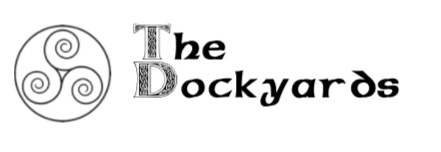A Guide to Exploring the Depths of Kabbalistic Teachings
Kabbalah is a mystical and esoteric tradition within Judaism. For many generations, truth seekers have been drawn to these teachings. It has bridged reality and spirituality work. Thanks to its teaching, you can now be able to interrelate reality and divinity, getting answers to questions they left unsolved by various religions. It has allowed them to view unexplainable events from a different perspective. Let’s learn more about these teachings, including their foundational principles and tools for practicality.

Image source: www.pixabay.com
Understanding the Foundations of Kabbalah
Kabbalah traces its roots way back to Ancient Jewish Mysticism between the 9th and 13th centuries. Its origin is shrouded in mystery and symbolism, sparking a lot of debate. Still, it was not as popular until the medieval period when it gained dynamism. This was primarily contributed by scholars such as Isaac the Blind and Abraham Abulafia. Over the centuries, it has evolved into one complex system made of spiritual teachings that explore the nature of God, creation, and the human soul.
Exploring the Key Themes
Central to it are the key concepts that help explain its teachings. They include the following:
Ein Sof
Also known as the Infinite, this concept represents God’s infinite and unknowable aspect. It is believed to be the source from which all existence emanates.
Tree of Life
This serves as a symbolic map of the universe. It is a symbolic diagram that shows Sefirot and their correlations. Represents the ten divine emanations through which God interacts with the world. Each Sefirah represents an aspect of divine power corresponding to a specific Ein Sof. For instance, Keter (Crown) represents the highest aspect of the divine, while Malkhut (Kingdom) represents the material world.
Sefirotic Psychology
This offers insights into the human psyche and the path to self-transformation. Individuals can gain a deeper understanding of the basic principles and practices of Kabbalah, which encompass a diverse array of practices to nurture the mind, body, and spirit. One can understand the connection of Sephirot with versatile factors of human consciousness, emotions, and personality.
The Study of Divine Energies
Usually depicted in Jewish texts like the Zohar and the Sefer Yetzirah, these concepts offer deeper insights into the nature of existence and the divine presence. They embrace the mystical significance of the Hebrew Alphabet and the discussion of the numerical value behind every letter to unravel the reality of creation.
Tikkun Olam
The phrase means “repairing the world,” restoring harmony and balance to the universe, facilitated by bringing back kosher to the universe. It is executed through acts of kindness or mending transgressions of brokenness and imperfections.
Practical Tools for Engaging with Kabbalah
There are multiple practices and rituals that can help someone enhance their exploration of the Kabbalistic teachings. For instance, you can try:
Meditation and Contemplation
These techniques help quiet the mind, allowing you to focus on your inner self and connect with divinity completely. They also help you develop awareness and mindfulness. Moreover, they nourish your inner serenity, which is crucial for exploring the ways and ideas of Kabbalah and turning them into spiritual insights.
Visualization
Applying visualization techniques to understanding Kabbalah allows you to create mental images of Kabbalistic ideas. This includes the Tree of Life, the Sephirot, and all other things that would be unimaginable naturally. Thus, complex issues and theories are unraveled with such vividness and concreteness that only mental imagery can provide.
Chanting and Sacred Sound
Incorporate chanting and sacred sounds into spiritual practices to evoke divine energies and create a sacred atmosphere conducive to spiritual growth. Chanting sacred names, prayers, or mantras helps a person get attuned to high spiritual frequencies and make contact with the divine presence.
Ethical Conduct
Following Kabbalistic teachings, good values emanated from practices such as kindness, compassion, and honesty. In the model, Kabbalah’s ethical work in the procedures played a critical role in spiritual development since it decreed the purification of consciousness and better affiliation to the divine attributes.
Studying Kabbalistic Texts
Immerse yourself in the Kabbalistic texts like Sefer Yetzirah, Zohar, and other basic works. Study them to possess awareness regarding Kabbalistic meanings, concepts, and symbols.
Participation in Study Groups
Find groups or communities that are dedicated to Kabbalistic studies. Wherein experienced teachers can impart knowledge while talking with similar people can be possible. Group research gives opportunities to learn well and share supportive insights along the spiritual path.
The levels of the deep-rooted kabbalistic teachings surge with the deep insights pertaining to existence and spirituality. That allows a Kabbalistic practitioner to take foot on the journey of knowing self and enlightening within the capacity. This is facilitated through the principles, themes, and practical tools for the spiritual growth of these practices. May your inquiry be informed by the wisdom of the Kabbalists along your own way for spiritual awakening and empowerment.



